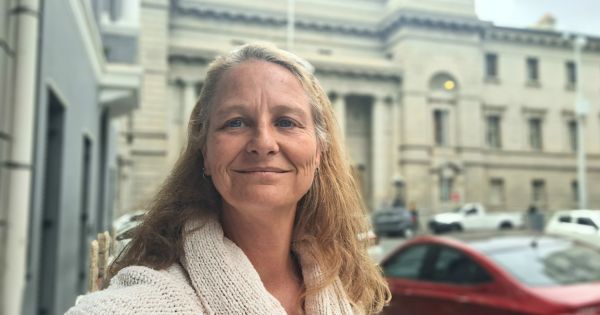Most children have high energy levels; hence you find them jumping, running around which leads them to experiencing many injuries in their childhood. Breaking a bone is a common occurrence for most children which becomes part of their learning process, parents try as hard as they can to keep their children safe but children can trip over toys or fall off couches, at the park or in a school yard.
The children can either break a bone or have a knee sprain that is when the knee is stretched or torn ligament. Ligaments are for supporting the knees and keeping the joints and bones in their correct position. Knee sprain can be caused by not using the correct fitting shoes or protective gear during an activity, not warming up or stretching before exercise or falling unexpectedly.

This Is How Parents Can Assess And A Treat Knee Injury At Home
After any incident the parent has to look out for knee pain symptoms such as a popping sound at the time of the injury, sudden intense pain, signs of swelling, leg stiffness, tenderness around the knee, redness above and below the injured surface, warmth on the knee with walking difficulties, unstable and weakness on the leg.
Knee injuries in children can be caused by many factors either by a specific trauma or condition, it has been quite common for children to complain about knee pain without experiencing an injury, it can be caused by arthritis or an the inflammation of the joints.
The initial treatment at home is rest, compression and elevation, treating the knee injury requires the parents to reduce the child from doing any activity that involves force and carrying heavy objects because the healing process can be set back by just a minor twist or hard movements. Have your child to rest his or her knee and not move frequently unless required. The resting helps with decreasing the swelling and to heal quickly.
Apply ice on their knee for 20 minutes, use an ice pack, or put crushed ice in a plastic bag. Always remember to cover the bag with a towel before you apply it as it helps prevent tissue damage. Keep bandages close to use them for applying compression on the knee. This helps by keeping the knee from moving too much while it heals. The bandage shouldn’t be too tight that it causes the child’s toes to feel numb or tingly.
Lastly elevate the child knee above the level of their heart as often as possible by propping their legs on pillows or blankets to keep it elevated comfortably. Avoid putting pillows under your child’s knee.
When Should You Call For The Doctor?
- If you see any part the child’s leg looking pale and feeling numb or cold.
- Increasing of swelling and bruising, and feeling more pain.
- Feeling less support weight in the knee.
- Knee feeling slightly out of place.
- No full motion of the knee.
- Painful popping out or clicking sound.
- Not being able to move.
- It hurts during or after an activity, continuously.
- When there is no improvement or any sign of healing within 6 weeks, even with treatments call your doctor.
Parents should remain cautious around their children’s injuries and always have questions or concerns about their condition and care, planning ahead and being prepared for any incidents that may occur around them becomes more easier to control the situation when they are knowledgeable about injury treatments before rushing for medical help unless it needs be.

About The Author
 Dr Naadir Bismilla is an Orthopaedic Surgeon in private practice specializing in Knees, Shoulders and Trauma Injuries. D Bismilla practices at Netcare Garden City Hospital, Netcare Krugersdorp Hospital, and at Medicross the Berg.
Dr Naadir Bismilla is an Orthopaedic Surgeon in private practice specializing in Knees, Shoulders and Trauma Injuries. D Bismilla practices at Netcare Garden City Hospital, Netcare Krugersdorp Hospital, and at Medicross the Berg.
Dr Naadir Bismilla began his career in medicine after graduating from the University of the Witwatersrand with his medical degree then went on to do his internship and community service years. Dr Bismilla then completed a qualification in orthopaedic surgery whilst finishing his Master of Medicine degree.
“I am so blessed to have two absolute passions in life. The first one started when I was a child, and that was sport. Sport is what kept me going as a young boy born in the 80s. Hand me a bat or give me a ball and I’d excel individually or within a team. The second one hit me when I was a medical student, and that is Orthopaedic Surgery. It was at that moment that I knew what I wanted to become and who I wanted to be someday. I then began my journey towards becoming an Orthopaedic Surgeon. After a lot of dedication, my hard work finally paid off and today I am an Orthopaedic Surgeon”
Dr Bismilla has been practicing as an orthopaedic surgeon in private practice since then. Being in the orthopaedics field for some time, Dr Bismilla has remained up to date with the latest techniques and technologies Dr Naadir Bismilla has a particular interest in the management and treatment of knee, shoulder and trauma injuries; he strives to help his patients regain mobility and return to their normal functionality despite having endured an injury and undergone surgery.
As a compassionate surgeon, Dr M. N. Bismilla always considers his patients’ needs and comfort levels during diagnosis and treatment and works to ensure they have the best possible outcome. Beyond his capabilities and expertise as an orthopaedic surgeon, Dr Bismilla understands the psychological and emotional effects of knee, shoulder and sports injuries on his patients. He approaches his patients empathetically to address concerns and provide a compassionate ear during treatment and rehabilitation.
“I am now able to combine both passions I am an orthopaedic surgeon that specializes in knees and shoulders, and frequently treats sports injuries. I also try and stay active by playing sport. I have had to sit on the side-lines for 6-8 weeks watching my team have the time of their life, and experienced the tedious rehabilitation process followed by weeks of putting in extra effort to try regain my fitness levels. I understand first-hand what some of my patients go through pre and post-surgery. I also understand that I am very fortunate that none of these injuries have impaired my abilities permanently. These experiences have made me more compassionate, and fuel my drive to do whatever I can and I within my knowledge and power to help my patients regain full functionality and movement so they can also pursue and conquer their goals and dreams again like I get to every day.”
With his membership to the South African Orthopaedic Association (SAOA), and affiliation with his brother, Dr Shaaheen Bismilla (an orthopaedic surgeon with a fellowship in knee surgery with Dr Glen Vardi), Dr Naadir Bismilla remains up-to-date with new research, technology, techniques and equipment in the field of orthopaedic surgery.

 Kaboutjie SA Mommy Blogs by Lynne Huysamen
Kaboutjie SA Mommy Blogs by Lynne Huysamen





Very informative blog post. Lynne do you perhaps have any tips on treating bruises and preventing lifelong scaring due to knee injuries? I fell when I was 5 and have this small but nasty scar on my knee, my 5 year old fell and she has a mark on her knee and I don’t want it to be permanent like mine.